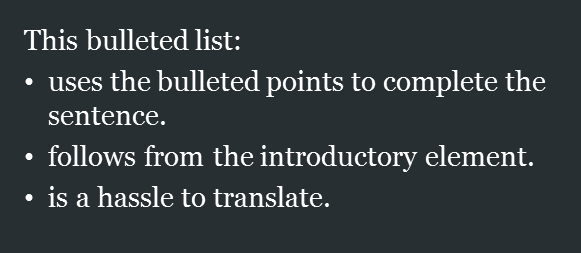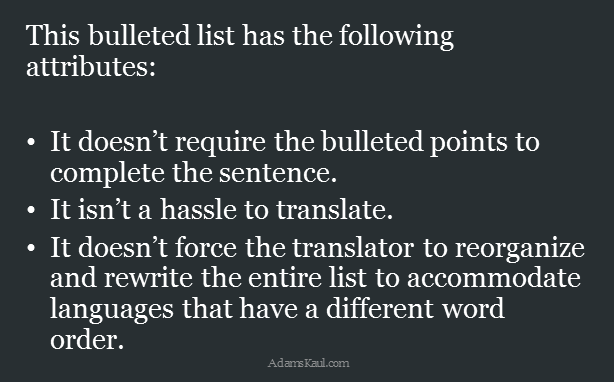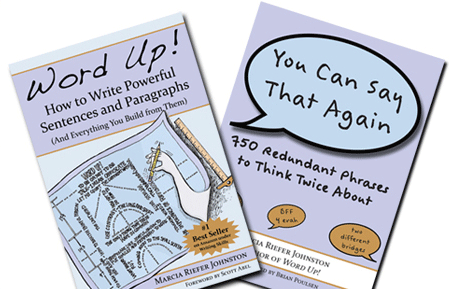
What the *&^! does that mean? We’ve all said it. Well, we’ve all said something like that. In fact, you can’t know what *&^! stands for. It’s ambiguous. If even I don’t know what word or words should go there, how in the world would a translator know what to do with it?
Why make your translator’s job harder and more expensive than it has to be? Why not remove ambiguity in the first place?
That’s what Global English helps writers do. Along the way, it saves companies big translation bucks. Greg Adams, a managing editor at Cook Medical, gives this example:
After starting to use Global English, our translation costs decreased by $1 million in 18 months. And we received many positive reviews from overseas colleagues about the increased usability of our translations.
What would your boss say to results like that?
I learned about Global English from a Content Wrangler webinar led by Greg Adams (quoted above) and Matthew Kaul. This article summarizes their main points. If you create English content for a global audience—even if your text is never translated—you’ll find their points valuable.
What Is Global English?
Greg and Matthew define Global English (also known as International English) as “A form of written English that is optimized for translation … that has powerful benefits even when you’re not writing for translation.”
Follow #GlobalEnglish guidelines—even if your English isn’t translated. Click To TweetIn this sense, Global English may remind you of plain English (which Wikipedia defines as “a generic term for communication in English that emphasizes clarity, brevity, and the avoidance of technical language—particularly in relation to official government or business communication”). Some of the practices are the same. And in both cases, the benefits apply to native speakers, too. The main difference? Global English addresses writing for an international audience.
First, here’s what Global English is not:
- Prescriptive grammar (like the so-called rule “Never start a sentence with and”).
- Dumbed-down English. (It simply helps you communicate more clearly.)
- (It sounds natural to native speakers.)
Global English accomplishes two important objectives:
- It eliminates ambiguity.
- It eases translation.
Who Benefits from Global English?
If you follow the Global English practices in your source English text, you’ll help many people:
- Translators (They’re more likely to translate correctly.)
- Nonnative English readers (They rely on what might seem like small cues—like the and an—to make sense of sentences.)
- Non-English-speaking readers (Global English yields better results from Google Translate or other machine-translation services.)
- Native English readers (Even they are more likely to understand your content.)
- Subject-matter experts (Understanding of the subject matter doesn’t guarantee understanding of ambiguous text.)
- Visually impaired readers (People who rely on screen-reading software are more likely to get an accurate sense of the content.)
- Patients (All of us need the clearest possible understanding of information about our health.)
- Employees (Doc reviews happen faster when reviewers can understand the content as it’s being developed.)
What Global English Techniques Can We Use Right Away?
Global English techniques are based on evidence—on the experiences of translators and nonnative speakers. You can apply Greg and Matthew’s top-recommended techniques today.
1. Keep most sentences under 30 words.
Don’t put too much stock in word count—you can’t always say what you want to say in 30 words. But for the most part, the longer the sentence, the greater the chance of ambiguity.
Look for opportunities to increase clarity by breaking up long sentences.
Example: This sentence contains 30 words—enough to give you lots of flexibility, plenty to convey a single thought, and fewer than many of the sentences in your company’s typical content.
Sample the sentences your company puts out. How many are under 30 words?
2. Keep the articles and other determiners (a, an, the, that, etc.).
Articles and other determiners matter. Don’t delete them. I’m talking about those little words that alert us to a noun coming: a, an, the, this, that, those, my, her, his, its, their, every, many, one, two, second, last. Writers often think that removing these words makes their text more concise. In fact, these words give people cues they need to extract meaning.
When you leave out the the, people have to supply a determiner for themselves. Why risk having them supply the wrong one?
Example: Block open port on catheter fitting. <— What the *&^! does this mean? It could mean any of the following:
- Block [the] open port on [the] catheter fitting.
- Block [an] open port on [the] catheter fitting.
- Block open [the] port on [the] catheter fitting.
Use the the. Don’t make your translators—or anyone else—guess what you mean.
3. Include all the important information.
Have you ever heard a writer say, “People will figure it out”? Don’t assume that context gives people enough information to figure out meaning.
Example A: Store in a loose coil. <— What the *&^! does this mean?
Better: Roll the cord into a loose coil for storage.
Example B: Verify graft position. <— What the *&^! does this mean?
Better: Verify that the graft is in the correct position.
Exercise your critical thinking to make sure that you don’t leave important information between the lines.
4. Avoid slashes (/).
A slash (/) can be interpreted various ways.
Example: Advance the catheter/sheath. <— What the *&^! does this mean? It could mean any of the following:
- Advance the catheter and the sheath simultaneously.
- Advance either the catheter or the sheath.
- Advance the catheter-sheath unit.
5. Generally, convert passive voice to active voice.
Passive voice isn’t, per se, wrong or bad. Use it as needed. The other 99% of the time, use active voice.
How do you recognize passive voice? You might think you know, but do you? Even English teachers sometimes get this wrong. Passive voice includes a be-verb (am, are, were, was, etc.) combined with the past-participle (-ed) form of the main verb.
Example: The cat was chased. <— What the *&^! does this mean? Who or what was chasing the cat? Here, the passive voice obscures this key information.
Better: The cat was chased by the mouse. <— This version is still passive, but at least it tells us who did the chasing. If you want to emphasize the cat, this phrasing may make sense.
Even better (usually): The mouse chased the cat. <— This version uses active voice, which is generally more clear, informative, and translatable.
Some languages have no appropriate equivalents for certain passive constructions. Who knew? I didn’t—until I listened to Greg and Matthew’s webinar.
The more you know about be-verbs—including and beyond their role in forming passive voice—the more you can tighten and strengthen your writing, and the more money you save in translation. For more, see my article “Write Tight(er): Get to the Point and Save Millions.”
6. Use fewer nouns.
Lots of corporate writing is noun-heavy; it’s full of nominalizations. A nominalization is the noun form of a verb or adjective. For example, output is a nominalization of the verb put out. The poor is a nominalization of the adjective poor.
Like passive verbs, nominalizations have their place. They aren’t evil. But overusing them bogs down your writing.
Example: The operation of the system increases efficiency. <— What the *&^! does this mean? Whose operation are we talking about?
Here, operation is a nominalization. It would help (after you figure out what this sentence means) to use its verb form, operate, instead.
Other nominalizations: utilization, facilitation, activation, completion, movement, reaction, discovery. Alternatives: use, enable, activate, complete, move, react, discover.
Here’s a tip from Greg and Matthew. Watch for –ation and –ment words. Also watch for the little phrase of the. Seriously. Grab a few chunks of English text from your website or a typical e-book, and search for ation, ment, and of the. Think of your results as a big opportunity.
#GlobalEnglish tip: Use fewer nouns. Search for 'ation,' 'ment,' and 'of the.' Click To Tweet7. Avoid incomplete sentences in bullet points.
Because word order varies from one language to another, translators can have a tough time with incomplete sentences in bulleted lists. So don’t use incomplete sentences as bullet items.
In other words, don’t do this (example from Greg and Matthew’s slide):

Instead, make each bullet point a complete sentence, like this:

This approach increases translation efficiency, ease, and accuracy.
8. Give pronouns clear antecedents.
In English, pronouns—including which, it, she, each, these, those, that, and many, many others—stand in for other words or phrases. (Some languages don’t have pronouns that can stand in for phrases—another thing I learned from this webinar.) When you use a pronoun with no clear antecedent, you risk confusing readers.
Example A: Our new monitor has virtually no background noise, which substantially reduces the number of false positives. <— What the *&^! does this mean? What exactly does which refer to?
Better: Our new monitor has virtually no background noise, a design improvement that substantially reduces the number of false positives.
Example B: To sterilize a reusable product using an autoclave, it must first be properly cleaned and disinfected. <— What the *&^! does this mean? Does it refer to the product or the autoclave?
Better: To sterilize a reusable product using an autoclave, the autoclave must first be properly cleaned and disinfected.
I have to make my best guess on that last one. So would a translator.
(For more on this rascal-iest of pronoun rascals—it—see my essay on the Grammar Girl blog: “Do Your Readers a Favor: Cut ‘It’ Out.”)
Conclusion
Here’s what your writers can do today to raise the quality of their English text and lower the cost of translations:
- Limit most sentences to 30 words.
- Keep the articles and other determiners (a, an, the, that, etc.).
- Include all the important information.
- Avoid slashes (/).
- Convert passive voice to active voice.
- Use fewer nouns.
- Avoid incomplete sentences in bullet points.
- Give pronouns clear antecedents.
There’s more to Global English than these eight points, of course. To learn more, listen to Greg and Matthew’s webinar for yourself, and look into the resources they point to.
You may be on your way to saving $1 million in 18 months, as Greg’s company did. It could be your boss saying, Holy *&^!
Know what I mean?
Want to practice writing tighter, clearer, more effective sentences? Play my weekly game, Tighten This! Subscribe to my blog under the heading “Sign Up!” (above right or, on a mobile device, all the way at the bottom). Then, each time I publish a post, including the newest game, you’ll receive an email.
This article first appeared on The Content Wrangler blog February 2, 2016.
Did you already share the above article? Share it now:



Writing Rocks!
Thanks, Yvette. So do you.
Best informative article EVER. I love Writing Rocks almost (almost) more than life. So nice …
Monique, do go on. (Geez, make my day, why don’t you?)
Marcia – this is a fantastic follow-up to your Confab 2015 session and your two books (which I’ve read, re-read, and dog-eared). You rock!
Lisa, You’ve made my day. Thanks for taking time to post this comment. How would you feel about mentioning your dog-earing on Amazon?